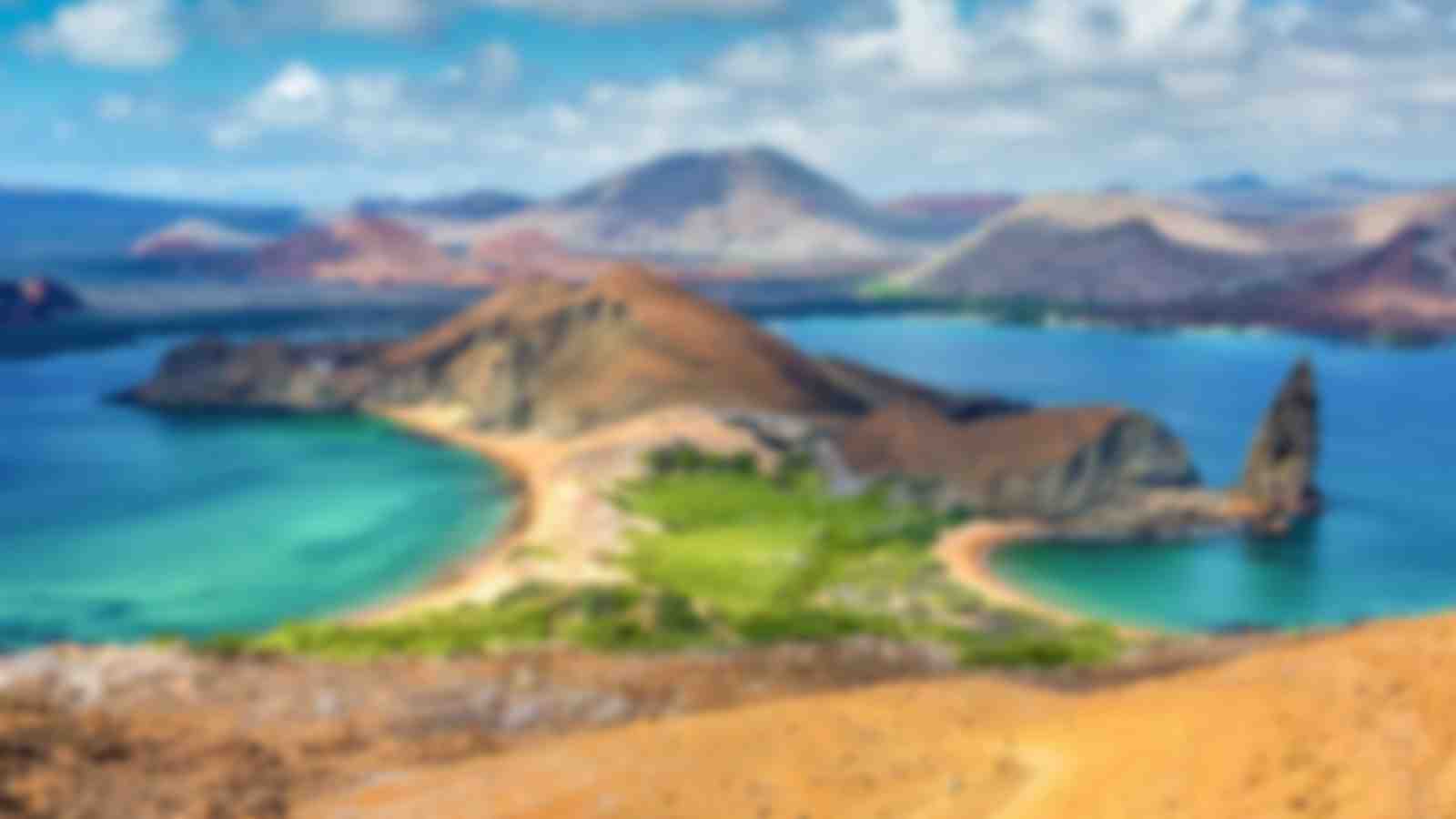- See two large boats discarded during WWII at Bachas Beach
- Witness the unparalleled biodiversity that inspired Charles Darwin
- Find Galápagos flamingos and pin-tail ducks at Espumilla Beach
- Hike the highlands of Santa Cruz to a Galapagos tortoise sanctuary
- Snorkel with rays and green turtles at Lobos Island
Day 1:
(AM) Baltra Airport – Arrive at Baltra Airport.
(PM) Santa Cruz – Bachas Beach
Bachas Beach is a beautiful white-sand beach on which the remnants of a rusted barge, thought to have been abandoned by the Americans during WWI, can be seen. It is a popular nesting site for turtles, so if you go for a snorkel, you might find yourself sharing the water with these wonderful creatures. The beach is also full of vibrant Sally Lightfoot and hermit crabs, and elegant pink flamingos that frequent the saltwater pond located just behind the beach.
Day 2:
(AM) Genovesa – Prince Philip’s Steps / El Barranco
El Barranco, also known as Prince Philip’s Steps, is a rocky stairway that will lead you past a colony of nazca and red-footed boobies leads up to a plateau of dried lava. Continuing through the thin Palo Santo forest and looking out over the plain, visitors are often treated to sites of storm petrels launching out over the ocean. A panga ride or kayaking/paddle boarding along the edge of the cliffs provides a good chance to see the elusive Galapagos fur seals nestled on the rocks, and snorkelling is a great activity if you fancy a dip with a variety of shark species.
(PM) Genovesa / Darwin Bay
Darwin Bay has a small sand and coral beach that provides the perfect spot for snorkelling, kayaking or paddle boarding in calm, sheltered waters in the company of hammerhead sharks, rays and a plethora of colourful reef fish. Onshore, a short trail leads along a tidal lagoon and mangroves, home to a variety of land bird species, including Nazca and red-footed boobies and swallow-tailed gulls. The trail culminates at a viewpoint that offers a stunning view overlooking the cliffs and the bay below.
Day 3:
(AM) Santiago – Espumilla Beach / Buccaneer Cove
Espumilla beach, located on the northern coast of Santiago island, is an exquisite white sand beach, whose name refers to the meringue-like trails of foam left by the lapping of the waves. Sally Lightfoot crabs are in abundance here and as a result, it is common to see predatory birds such as hawks, herons and pelicans.
This idyllic location is perfect for snorkeling or kayaking/paddle boarding amongst a raft of marine life, including species of octopus, eels and sharks. Buccaneer Cove has an interesting history as it is where sailors, buccaneers and whalers frequently anchored their vessels in search for food and water. In more recent times it has become an important nesting site for turtles and is also popular with sea lions. A panga ride along the eroded shoreline provides views of intriguing rock formations that provide excellent ledges for boobies, pelicans and gulls.
(PM) Egas Port
Egas Port was once the site of a salt mine, but now this impressive black sand beach is an excellent location for snorkelling and observing shorebirds, Sally Lightfoot crabs and marine iguanas. A stroll along the wide trails inland leads you past tidal pools and rocky volcanic formations known as grottoes where it is possible to spot fur seals enjoying a spot of shade.
Day 4:
(AM) Black Turtle Cove
The first visit of the day is to Black Turtle Cove, which is located on the north shore of Santa Cruz. It is a living illustration of how mangroves alter the marine environment to create a rich and unique habitat. Three mangrove species crowd the area from the shore out into a shallow lake which reaches almost a mile inland.
As you drift through quiet waters in the zodiac, you are likely to see spotted eagle rays and diamond-shaped mustard rays, which swim in a diamond formation. White-tipped reef sharks slip beneath the boat and Pacific green sea turtles come to the surface for air and to mate. Waterfowl, including pelicans, herons and egrets, all feed in the cove. It’s a peaceful place where visitors often have up-close encounters with Galapagos wildlife, often making it a highlight of the trip!
(PM) Highlands and Charles Darwin Research Station
On the highlands of Santa Cruz, you’ll have the opportunity to see the famous giant tortoises in the wild. So renowned are these endemic animals that they gave the archipelago its name. Birdwatching is also one of the activities to do in the Santa Cruz highlands, since this area is home of finches and other Galapagos birds.
After the visit to the highlands, we continue to the famous Charles Darwin Research Station that provides guests with a unique opportunity to find out about the vital work that is being carried out to preserve the archipelago’s ecosystems. The Research Center is also home to a significant breeding program for Galapagos tortoises, whose numbers have been in decline since the 1970’s. These captivating reptiles are very accustomed to humans, so be sure to bring your camera for some close-ups.
Day 5:
(AM) Lobos Island / San Cristobal
Accessed by panga, Lobos island gets its name from the herds of sea lions that have made their home here. Snorkelling in the calm clear water provides a unique opportunity to see these inquisitive and playful animals up close and it is also common to be accompanied by green turtles and rays as well. Inland there is a trail where you can expect to encounter nesting sites for blue-footed boobies and frigates.
(PM) San Cristobal Airport
Depart from San Cristobal Airport.
Sample itineraries are for guidance only. Actual itineraries may differ slightly due to factors such as weather, wildlife, logistics and local regulations.
